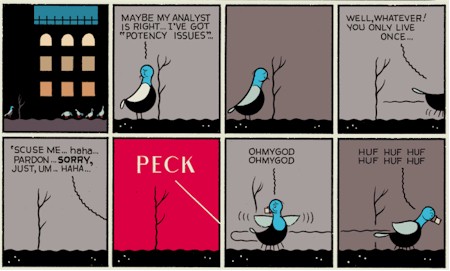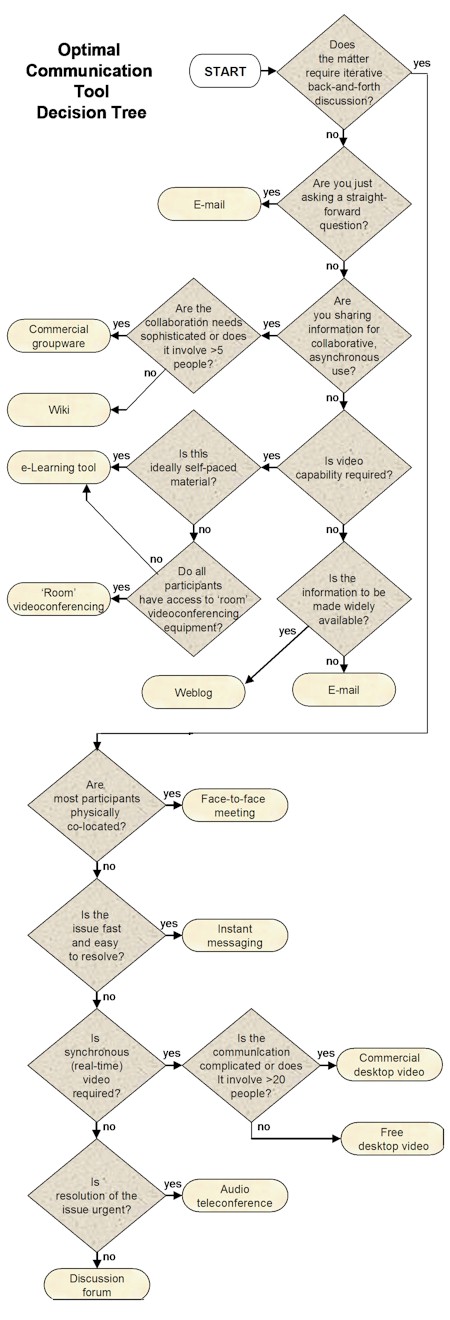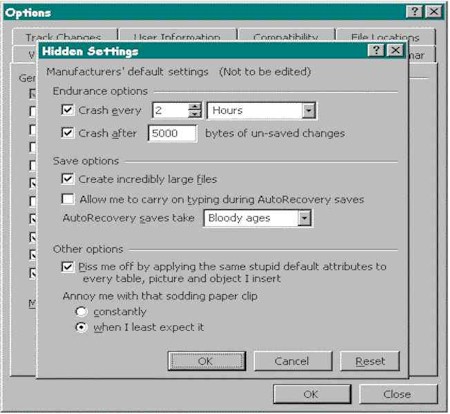 US Supreme Court to Hear Lawsuit Against EPA For Not Doing It’s Job: In one of the most important rulings for the US’s environment in decades, a lawsuit brought by 12 states against the EPA for neglecting its job to enforce air pollution laws causing global warming is now being argued in front of the US Supreme Court. The Bushies are likely to prevail, unfortunately, since they are the ones who have picked the majority of the right-leaning court. The very fact that one group of governments has to sue another to get them to enforce already-feeble environmental law shows how far the corporatists have come in their domination of US politics. And last month’s election results won’t significantly change that. Ontario Municipal Board Deals Death Blow to Oak Ridges Moraine: And in one of the most important rulings for Canada’s environment in decades, the stridently pro-development Ontario Municipal Board has ruled in favour of a massive development scheme on the Oak Ridges Moraine North of Toronto. The Moraine is the buffer for Toronto development and urban sprawl, and its protection is essential to the health of the groundwater and wildlife habitat for the greater Toronto area. This ruling, by the arch-right-wing OMB, an unelected organization with extraordinary powers which is in the back pockets of big development interests, essentially opens the entire Moraine to untrammeled development, since it serves notice that developers will continue to receive automatic approval for all developments on the Moraine regardless of their environmental impact. I predicted this a few months ago. I wish I had been proved wrong. …Now do you see why I’ve given up on political means to ‘save the world’? Fashion Industry Proves Severe Intellectual Property Protection is the Enemy, Not the Friend, of Innovation: Andrew Leonard in HTWW explains how the fashion industry, which has none of the IP rights that music and film executives argue are essential to their viability, is doing just fine without them. Excerpt: Like the music, film, video game, and book publishing industries, the fashion industry profits by repeatedly originating creative content. But unlike these industries, the fashion industry’s principal creative element — its apparel designs — is outside the domain of IP law. And as a brief tour through any fashion magazine or department store will demonstrate, while trademarks are well-protected against piracy, design copying is ubiquitous. Nonetheless, the industry develops a tremendous variety of clothing and accessory designs at a rapid pace. This is a puzzling outcome. The standard theory of IP rights predicts that extensive copying will destroy the incentive for new innovation. Yet, fashion firms continue to innovate at a rapid clip, precisely the opposite behavior of that predicted by the standard theory.
Canada’s Liberals Elect Environmentalist Moderate Over Charismatic Front-Runners: The Liberal Party’s choice, virtually certain to be Canada’s next Prime Minister to replace the right-wing ideological extremist Stephen Harper’s minority regime, confounded all the pundits. StÈphane Dion received only 20% of the delegates’ votes on the first ballot, but thanks to second and third place votes moved by opportunistic front-runners Bob Rae, the former NDP Ontario premier who switched to the Liberals to run for the leadership, and Michael Ignatieff, the Harvard professor and neophyte party member who gave up his comfy position and returned to Canada after decades in the US for the same reason. Seems that the Liberal faithful thought that hard work and a lifetime’s devotion to the party and its principles were more important than charisma and clever speaking ability. Although Canadians don’t yetknow Dion, I predict he’ll win a landslide victory in the next election. Just for fun: Geoff Ryman’s fascinating interactive online novel 253 set on the London Underground (mapped above). I’m just working my way through it, but it’s addictive. Thanks to etbnc for the link. |
Navigation
Collapsniks
Albert Bates (US)
Andrew Nikiforuk (CA)
Brutus (US)
Carolyn Baker (US)*
Catherine Ingram (US)
Chris Hedges (US)
Dahr Jamail (US)
Dean Spillane-Walker (US)*
Derrick Jensen (US)
Dougald & Paul (IE/SE)*
Erik Michaels (US)
Gail Tverberg (US)
Guy McPherson (US)
Honest Sorcerer
Janaia & Robin (US)*
Jem Bendell (UK)
Mari Werner
Michael Dowd (US)*
Nate Hagens (US)
Paul Heft (US)*
Post Carbon Inst. (US)
Resilience (US)
Richard Heinberg (US)
Robert Jensen (US)
Roy Scranton (US)
Sam Mitchell (US)
Tim Morgan (UK)
Tim Watkins (UK)
Umair Haque (UK)
William Rees (CA)
XrayMike (AU)
Radical Non-Duality
Tony Parsons
Jim Newman
Tim Cliss
Andreas Müller
Kenneth Madden
Emerson Lim
Nancy Neithercut
Rosemarijn Roes
Frank McCaughey
Clare Cherikoff
Ere Parek, Izzy Cloke, Zabi AmaniEssential Reading
Archive by Category
My Bio, Contact Info, Signature Posts
About the Author (2023)
My Circles
E-mail me
--- My Best 200 Posts, 2003-22 by category, from newest to oldest ---
Collapse Watch:
Hope — On the Balance of Probabilities
The Caste War for the Dregs
Recuperation, Accommodation, Resilience
How Do We Teach the Critical Skills
Collapse Not Apocalypse
Effective Activism
'Making Sense of the World' Reading List
Notes From the Rising Dark
What is Exponential Decay
Collapse: Slowly Then Suddenly
Slouching Towards Bethlehem
Making Sense of Who We Are
What Would Net-Zero Emissions Look Like?
Post Collapse with Michael Dowd (video)
Why Economic Collapse Will Precede Climate Collapse
Being Adaptable: A Reminder List
A Culture of Fear
What Will It Take?
A Future Without Us
Dean Walker Interview (video)
The Mushroom at the End of the World
What Would It Take To Live Sustainably?
The New Political Map (Poster)
Beyond Belief
Complexity and Collapse
Requiem for a Species
Civilization Disease
What a Desolated Earth Looks Like
If We Had a Better Story...
Giving Up on Environmentalism
The Hard Part is Finding People Who Care
Going Vegan
The Dark & Gathering Sameness of the World
The End of Philosophy
A Short History of Progress
The Boiling Frog
Our Culture / Ourselves:
A CoVid-19 Recap
What It Means to be Human
A Culture Built on Wrong Models
Understanding Conservatives
Our Unique Capacity for Hatred
Not Meant to Govern Each Other
The Humanist Trap
Credulous
Amazing What People Get Used To
My Reluctant Misanthropy
The Dawn of Everything
Species Shame
Why Misinformation Doesn't Work
The Lab-Leak Hypothesis
The Right to Die
CoVid-19: Go for Zero
Pollard's Laws
On Caste
The Process of Self-Organization
The Tragic Spread of Misinformation
A Better Way to Work
The Needs of the Moment
Ask Yourself This
What to Believe Now?
Rogue Primate
Conversation & Silence
The Language of Our Eyes
True Story
May I Ask a Question?
Cultural Acedia: When We Can No Longer Care
Useless Advice
Several Short Sentences About Learning
Why I Don't Want to Hear Your Story
A Harvest of Myths
The Qualities of a Great Story
The Trouble With Stories
A Model of Identity & Community
Not Ready to Do What's Needed
A Culture of Dependence
So What's Next
Ten Things to Do When You're Feeling Hopeless
No Use to the World Broken
Living in Another World
Does Language Restrict What We Can Think?
The Value of Conversation Manifesto Nobody Knows Anything
If I Only Had 37 Days
The Only Life We Know
A Long Way Down
No Noble Savages
Figments of Reality
Too Far Ahead
Learning From Nature
The Rogue Animal
How the World Really Works:
Making Sense of Scents
An Age of Wonder
The Truth About Ukraine
Navigating Complexity
The Supply Chain Problem
The Promise of Dialogue
Too Dumb to Take Care of Ourselves
Extinction Capitalism
Homeless
Republicans Slide Into Fascism
All the Things I Was Wrong About
Several Short Sentences About Sharks
How Change Happens
What's the Best Possible Outcome?
The Perpetual Growth Machine
We Make Zero
How Long We've Been Around (graphic)
If You Wanted to Sabotage the Elections
Collective Intelligence & Complexity
Ten Things I Wish I'd Learned Earlier
The Problem With Systems
Against Hope (Video)
The Admission of Necessary Ignorance
Several Short Sentences About Jellyfish
Loren Eiseley, in Verse
A Synopsis of 'Finding the Sweet Spot'
Learning from Indigenous Cultures
The Gift Economy
The Job of the Media
The Wal-Mart Dilemma
The Illusion of the Separate Self, and Free Will:
No Free Will, No Freedom
The Other Side of 'No Me'
This Body Takes Me For a Walk
The Only One Who Really Knew Me
No Free Will — Fightin' Words
The Paradox of the Self
A Radical Non-Duality FAQ
What We Think We Know
Bark Bark Bark Bark Bark Bark Bark
Healing From Ourselves
The Entanglement Hypothesis
Nothing Needs to Happen
Nothing to Say About This
What I Wanted to Believe
A Continuous Reassemblage of Meaning
No Choice But to Misbehave
What's Apparently Happening
A Different Kind of Animal
Happy Now?
This Creature
Did Early Humans Have Selves?
Nothing On Offer Here
Even Simpler and More Hopeless Than That
Glimpses
How Our Bodies Sense the World
Fragments
What Happens in Vagus
We Have No Choice
Never Comfortable in the Skin of Self
Letting Go of the Story of Me
All There Is, Is This
A Theory of No Mind
Creative Works:
Mindful Wanderings (Reflections) (Archive)
A Prayer to No One
Frogs' Hollow (Short Story)
We Do What We Do (Poem)
Negative Assertions (Poem)
Reminder (Short Story)
A Canadian Sorry (Satire)
Under No Illusions (Short Story)
The Ever-Stranger (Poem)
The Fortune Teller (Short Story)
Non-Duality Dude (Play)
Your Self: An Owner's Manual (Satire)
All the Things I Thought I Knew (Short Story)
On the Shoulders of Giants (Short Story)
Improv (Poem)
Calling the Cage Freedom (Short Story)
Rune (Poem)
Only This (Poem)
The Other Extinction (Short Story)
Invisible (Poem)
Disruption (Short Story)
A Thought-Less Experiment (Poem)
Speaking Grosbeak (Short Story)
The Only Way There (Short Story)
The Wild Man (Short Story)
Flywheel (Short Story)
The Opposite of Presence (Satire)
How to Make Love Last (Poem)
The Horses' Bodies (Poem)
Enough (Lament)
Distracted (Short Story)
Worse, Still (Poem)
Conjurer (Satire)
A Conversation (Short Story)
Farewell to Albion (Poem)
My Other Sites


 Although it’s disastrous for the environment, flying to a faraway place or different culture provides a great opportunity to hone your observational skills, and to open up your senses and perceptions and tune into your instincts. In familiar environments where ritual drives much of our conscious activity and the landscape is so familiar we hardly notice it, this is much harder to do.
Although it’s disastrous for the environment, flying to a faraway place or different culture provides a great opportunity to hone your observational skills, and to open up your senses and perceptions and tune into your instincts. In familiar environments where ritual drives much of our conscious activity and the landscape is so familiar we hardly notice it, this is much harder to do.








